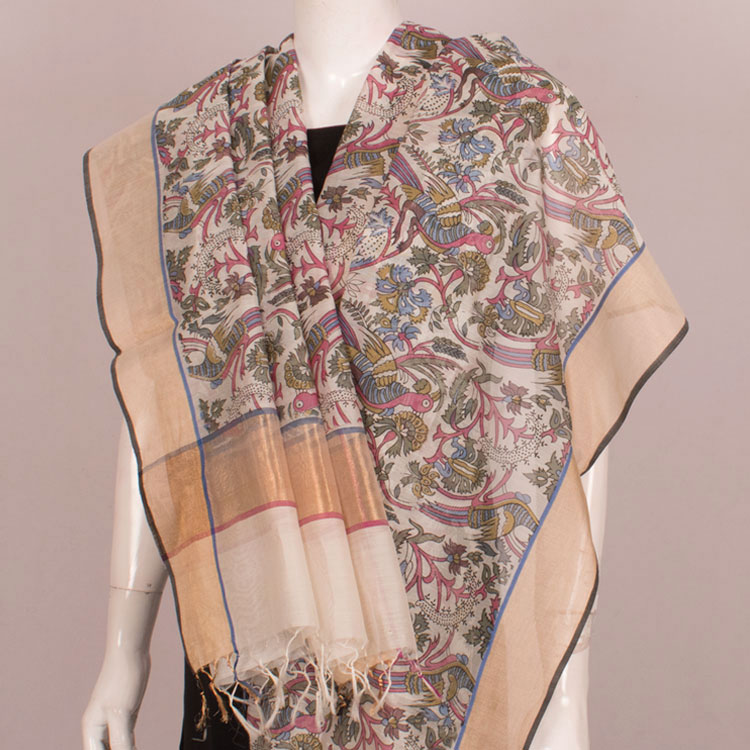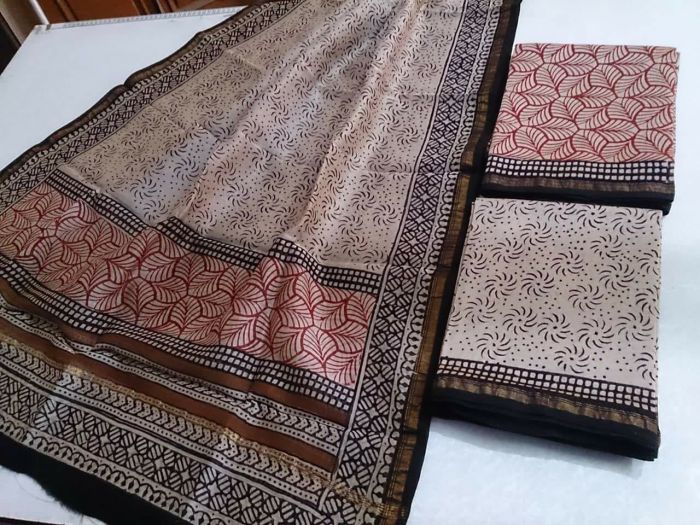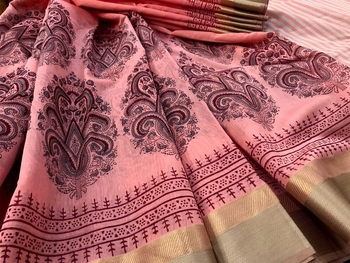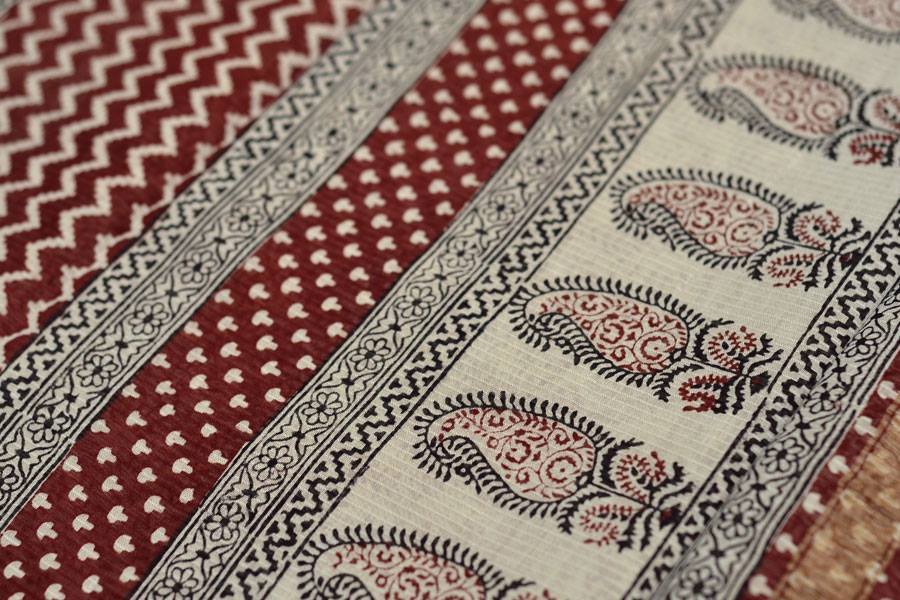Hand block printing remains among the most popular techniques of designing traditional textiles. It is practiced in regions across the western fringes of Madhya Pradesh, particularly in Malwa and Nimar, where methods of manual printing are drawn from time honored traditions, and organic dyes are used to transfer intricate motives on cotton. The town of Bhairogarh near Ujjain is home to a prolific community of painters, whose ancestors are believed to have been patronized by Emperor Akbar. Although traditionally specialized in the printing of quilts and veils known as oudhnis, the craftsmen have now begun to extend their expertise to saris, dress materials and upholstery too.
As the demand increases, the weavers are forced to modernize their approach to handloom whether it is the processing of raw materials or the conception of design. However, the weaver’s dedication to their craft remains wavered. The value of an authentic Madhya Pradesh’s handloom sari will never diminish, simply because of the weaver’s commitment and passion to their art.
Drawing from the indigenous techniques of the Bhil community, Nandna prints , another famous handloom product of Madhya Pradesh, adopt a painstaking process – the fabric and colour solutions require weeks of intense labour to bring forth the vibrant colours and motifs. Craftsmen in the town of Kawad are specialized in this technique.
In the town of Bagh in the Dhar district, a dedicated community of printers known as Chheepas extract colours from the roots of the Aal plants and transform them into intricate patterns on fabric in Bagh printing style. Characterised by the use of black and red colours on a white background, a Bagh sari can typically take up to 3 or 4 weeks for production, as their three-dimensional tone is an affect achieved only by hand. The extremely attractive Bagh bedspreads are also very popular giveaways.




